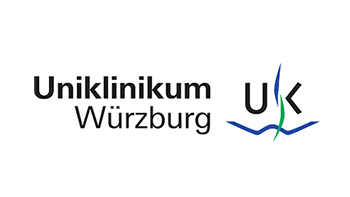Sep 10, 2024
Standardized wireless deep brain stimulation system for mice.
Grotemeyer A*, Petschner T*, Peach R, Hoehl D, Knauer T, Thomas U, Endres H, Blum R, Sendtner M, Volkmann J, Ip CW.
*equal contribution
NPJ Parkinsons Dis. 2024; 10(1): 153.
doi: 10.1038/s41531-024-00767-2.
Download summary: ReTune PoM 2024 Aug
Deep brain stimulation (DBS) is a well-established method to modulate neural circuits, but its application in small animal models like mice has been limited by the technical challenges of creating a wireless and standardized system. Traditional DBS systems are often tethered, which restricts movement and can influence behavior, complicating the study of dynamic motor functions. To address these limitations, this study presents a novel wireless DBS (wDBS) microstimulation system specifically designed for mice, integrating programmable options similar to human DBS systems, including settings for current amplitude, pulse width, and frequency. Our system allows for unilateral stimulation while minimizing interference with spontaneous behavior due to its lightweight and subcutaneous implantation.
A key innovation of this study is the incorporation of a deep learning-based pipeline for gait analysis, using convolutional neural networks (CNNs) to quantify motor dysfunction and recovery in Parkinson’s disease (PD) models. Through markerless tracking of body posture, rotation, and stride in treadmill recordings, this system captures 15 distinct gait features indicative of PD-like impairments in mice. The introduction of the Parkinson’s disease severity score for mice (PD-SSm) provided a robust framework for assessing gait patterns pre-and post-wDBS, allowing for objective measurement of motor improvements – paving the way to a ‘rodent-UPDRS (III)’. This is particularly valuable, as conventional behavioral assessments in rodent models often lack the granularity needed to detect subtle changes in motor function.
The study demonstrates that wDBS at 100 μA significantly improves motor performance, reducing PD-SSm scores by 25% in PD mice. However, lower stimulation amplitudes (60 μA) were ineffective, highlighting the importance of precise electrochemical infiltration in achieving therapeutic outcomes. The system demonstrates strong experimental flexibility with potential for future advancements. The current 52-day battery life, though suitable for extended studies, presents an opportunity for even longer research periods. While the device currently offers unilateral, unipolar stimulation, future improvements will likely expand it to bilateral use, enabling deeper neural exploration. The external programming interface, while useful for adjustments, sets the stage for fully implantable, long-term systems. Overall, the system’s adaptability and potential for continuous development make it a promising tool for preclinical research. Despite these challenges, the study‘s integration of machine learning for behavior tracking and wDBS sets hopefully a new standard for reproducibility in preclinical DBS research. By offering a more comprehensive and ecologically valid assessment of motor recovery in freely moving mice, this wireless system bridges the gap between clinical and preclinical DBS applications, providing a scalable and adaptable model for investigating DBS mechanisms and treatment efficacy across neurological disorders.
Dr. Alexander Grotemeyer
Alexander Grotemeyer, clinician scientist in Neurology, is in the final stages of his specialist medical training at Universitätsklinikum Erlangen. His research focuses on neuroinflammation and both the effects and techniques of DBS in movement disorders.
Tobias Petschner
Tobias Petschner is a PhD candidate at Neurology department in Würzburg. His research focuses on molecular and cellular alterations in PD and plasticity mechanisms induced by DBS.
Prof. Chi Wang Ip
Chi Wang Ip is the Vice Chairman of Neurology dep. in Würzburg. His research focuses on understanding the molecular, cellular and network mechanisms underlying movement disorders.
PoMs 2024:
ReTune PoM 2024 Jul
ReTune PoM 2024 Jun
ReTune PoM 2024 May
ReTune PoM 2024 Apr
ReTune PoM 2024 Mar
ReTune PoM 2024 Feb
ReTune PoM 2024 Jan











